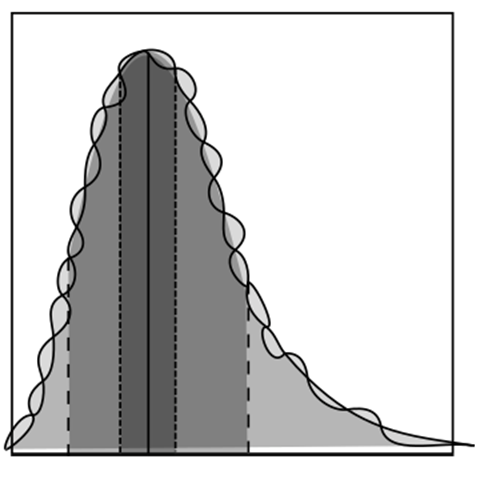

To study phenotypes of economic importance, it is important to understand the genetic architecture underlying its regulation. These genetic pathways can be formalized as a combination of quantitative trait loci (QTL) that have additive and epistatic e↵ects. Given all genetic variants in a population of diverse individuals (e.g., approx. 28 million variants in the BioEnergy Science Center’s Populus association mapping population (n=882)), the possible combinations of multiple-QTL models to assess is practically intractable. The exploration of multiple-QTL models falls into the larger field of model selection, where it’s critical to determine how to
traverse models. Permutation testing is a common method to provide test statistics under a null hypothesis of no QTL, and a means to penalize multiple QTL models.
Utilizing the DOE’s BioEnergy Science Center’s (BESC’s) Poplar Genome-Wide Association Study (GWAS) Genotype Dataset, publicly available at their Download page (see Table 1, and a simulated phenotype available at the Data Challenge’s web page (see Table 2).
| Description | Name | Size |
|---|---|---|
| Poplar variants (in VCF format) | SNP dataset | 78G |
Table 1: Genotype Data – variants Populus individuals
| Description | Name | Size |
|---|---|---|
| Simulated phenotypes coded in two columns containing individual ID and corresponding quantitative phenotype | BESC_phenotype_DataChallenge.tsv | 25k |
Table 2: Phenotype Data – simulated quantitative trait for genotyped Populus individuals
The challenge is to empirically determine or estimate the distribution of test statistics under the null hypothesis of no genetic regulation from permutation tests of genotype and phenotype data of the Populus association mapping population on reasonable timescales; this provides accurate significance thresholds that enable biological interpretation. To this end, the following aims should be addressed.
1. Determine significance thresholds for genetic effects from permutations of an n-dimensional genome scan.
(a) additive effects of a 1-dimensional scan
(b) additive and epistatic e↵ects of a n-dimensional scan, for n >= 2
2. Apply significance thresholds to multiple-QTL model selection.
3. Can the number of permutations be reduced by identifying patterns in permutation result? (e.g., adaptive permutations? fixed density patterns?)
